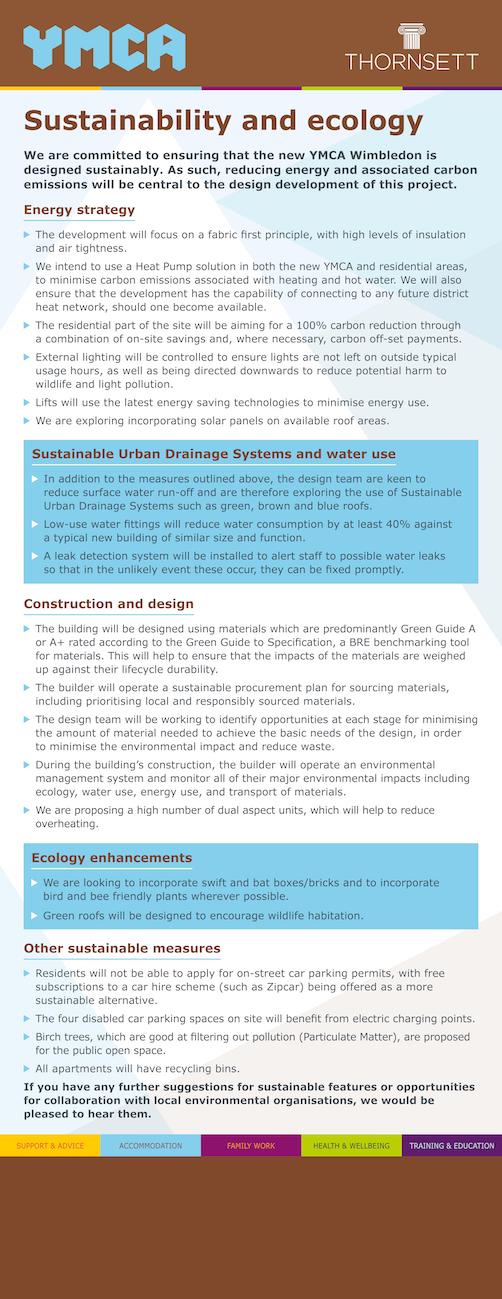We are committed to ensuring that the new YMCA Wimbledon is designed sustainably. As such, reducing energy and associated carbon emissions will be central to the design development of this project.
Energy strategy
The development will focus on a fabric first principle, with high levels of insulation and air tightness. We intend to use a Heat Pump solution in both the new YMCA and residential areas, to minimise carbon emissions associated with heating and hot water. We will also ensure that the development has the capability of connecting to any future district heat network, should one become available. The residential part of the site will be aiming for a 100% carbon reduction through a combination of on-site savings and, where necessary, carbon off-set payments. External lighting will be controlled to ensure lights are not left on outside typical usage hours, as well as being directed downwards to reduce potential harm to wildlife and light pollution. Lifts will use the latest energy saving technologies to minimise energy use. We are exploring incorporating solar panels on available roof areas.Sustainable Urban Drainage Systems and water use
In addition to the measures outlined above, the design team are keen to reduce surface water run-off and are therefore exploring the use of Sustainable Urban Drainage Systems such as green, brown and blue roofs. Low-use water fittings will reduce water consumption by at least 40% against a typical new building of similar size and function. A leak detection system will be installed to alert staff to possible water leaks so that in the unlikely event these occur, they can be fixed promptly.Construction and design
The building will be designed using materials which are predominantly Green Guide A or A+ rated according to the Green Guide to Specification, a BRE benchmarking tool for materials. This will help to ensure that the impacts of the materials are weighed up against their lifecycle durability. The builder will operate a sustainable procurement plan for sourcing materials, including prioritising local and responsibly sourced materials. The design team will be working to identify opportunities at each stage for minimising the amount of material needed to achieve the basic needs of the design, in order to minimise the environmental impact and reduce waste. During the building’s construction, the builder will operate an environmental management system and monitor all of their major environmental impacts including ecology, water use, energy use, and transport of materials. We are proposing a high number of dual aspect units, which will help to reduce overheating.Ecology enhancements
We are looking to incorporate swift and bat boxes/bricks and to incorporate bird and bee friendly plants wherever possible. Green roofs will be designed to encourage wildlife habitation.Other sustainable measures
Residents will not be able to apply for on-street car parking permits, with free subscriptions to a car hire scheme (such as Zipcar) being offered as a more sustainable alternative. The four disabled car parking spaces on site will benefit from electric charging points. Birch trees, which are good at filtering out pollution (Particulate Matter), are proposed for the public open space. All apartments will have recycling bins.If you have any further suggestions for sustainable features or opportunities for collaboration with local environmental organisations, we would be pleased to hear them.


